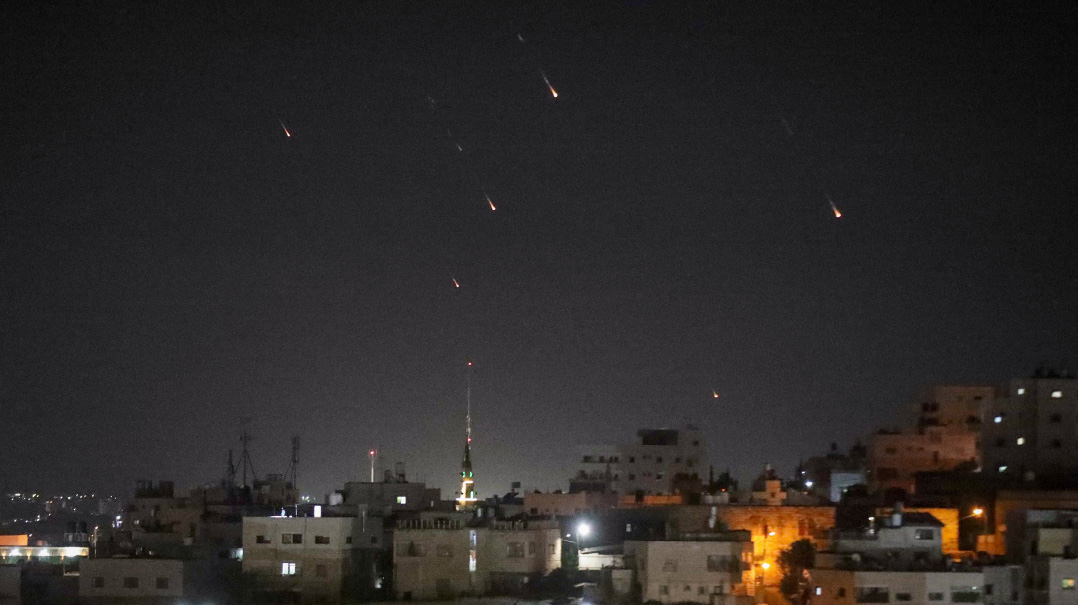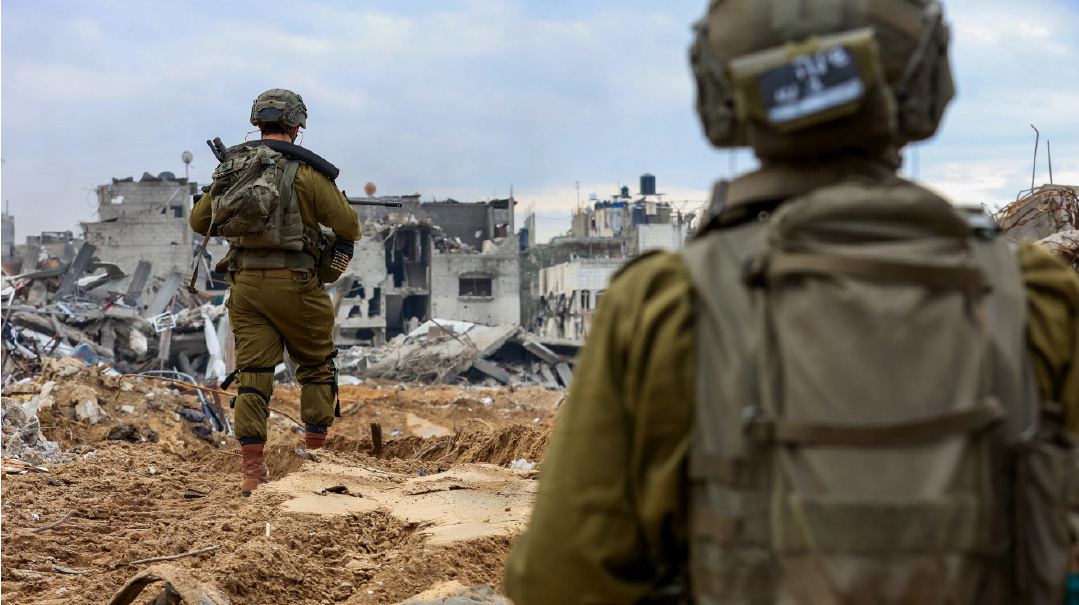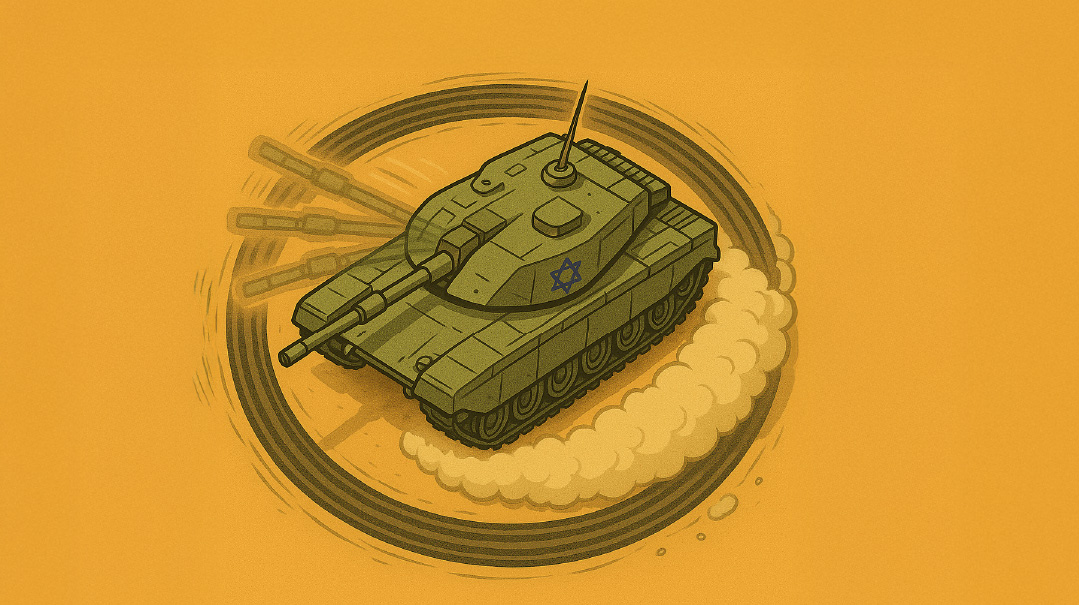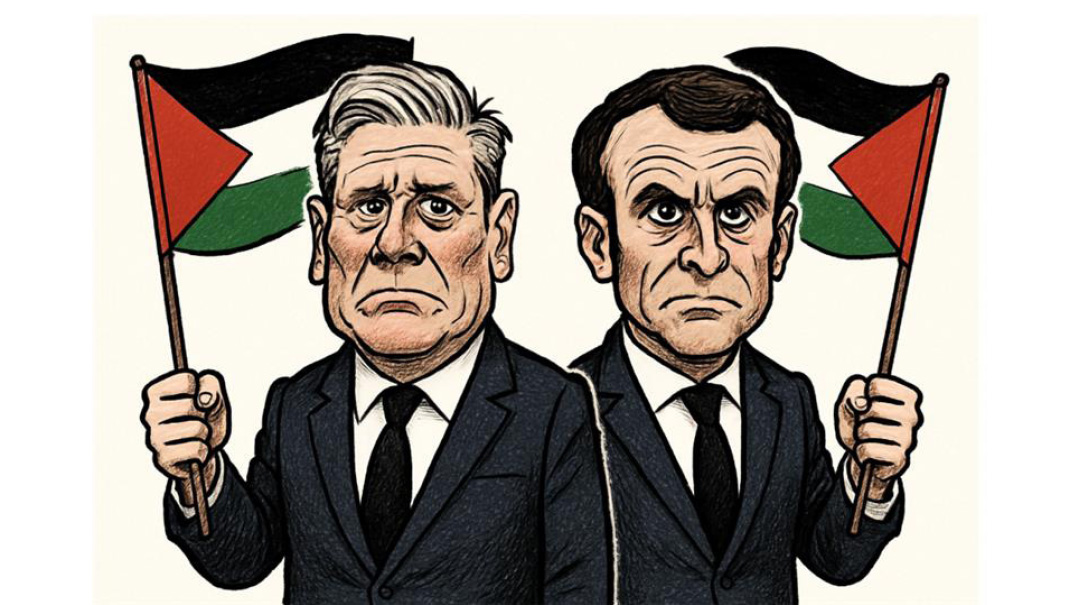Game Changer
| October 29, 2024Operation Days of Repentance — the first open Israeli attack on Iranian soil — changed the rules of the game in the Middle East

Israel’s precision airstrikes on carefully selected targets have exposed Iran’s defenses as a sham, shattering its deterrence capabilities and leaving it with only bad choices
L
ast Shabbos night, three weeks after Iran’s ballistic missile attack on Israel, over 100 Israeli fighter jets embarked on a mission that will go down in history. Operation Days of Repentance — the first open Israeli attack on Iranian soil — changed the rules of the game in the Middle East and proved that distance is no longer a guarantee of immunity for the ayatollahs’ regime.
“The IDF is currently carrying out precise strikes on military targets in Iran,” IDF spokesperson Daniel Hagari announced at 2:30 a.m., as news agencies reported a series of explosions in Tehran and the industrial city of Karaj.
The attack, which was approved by the security cabinet in a phone meeting, was carried out in full coordination with the Americans, who were notified several hours in advance.
The complex operation took place in three waves. In the first stage, F-35 stealth fighter jets targeted Iran’s air defense systems. At the same time, to prevent detection, the Air Force destroyed radar stations in Syria. The destruction of Iran’s air defenses, including expensive Russian S-300 surface-to-air missile batteries, cleared the way for the later waves of attacks.
The second wave, which began at 3 a.m., focused on a strategic target: a key plant in Karaj that produces solid rocket propellant used in ballistic missiles. According to reports on the Saudi Elaph news outlet, about 20 advanced fuel mixers were destroyed, each of which costs about $2 million. The damage to the plant is a severe blow to Iran’s missile program, with experts estimating that it will take at least two years to restore its original production capacity.
The third wave targeted command-and-control centers, including facilities in the Parchin area, a sensitive military site used for nuclear tests in the past. In addition, Israel struck facilities for the production of Khaybar and Qasem surface-to-surface missiles —of the same type launched at Israel in the October 1 attack.
The importance of the attack goes well beyond the physical damage, which is estimated at tens of millions of dollars. The damage to Iran’s air defense systems exposes it to future attacks, especially considering how difficult it will be for the regime to acquire new systems under international sanctions. Moreover, Russia, Iran’s main supplier of air defense systems, now needs those systems itself for its war in Ukraine.
The precise choice of targets reflects a delicate balance: significantly degrading Iran’s military capabilities while refraining from attacking nuclear facilities or civilian infrastructure that could spark a regional escalation. As a senior defense official noted: “This is a strategic blow and proof that the fear of Iran is over.”
While Israel’s defense establishment is preparing for a possible response from Iran or its proxies in the region, the message sent by Operation Days of Repentance is clear: Israel is capable of reaching anywhere and hitting sensitive targets. Israel’s proven ability to strike precisely deep inside Iranian territory marks a new era in regional power politics.
What can we take away from the operation? Here are three key points:
Breaking the Magic Envelope
In one night of precision strikes deep inside Iran, the illusion of the Islamic Republic’s impenetrable air defenses was shattered. After years of touting its advanced air defense systems and modern Russian technology, the Iranian regime found itself unable to prevent Israel’s penetration of its airspace, even as its forces were on high alert for an attack they knew would come.
The gap between image and reality was fully exposed to the world, with Iran’s air defense system, which includes Russian S-300 batteries costing $120 million each, failing to protect key strategic assets. Four batteries were completely destroyed, a financial loss of approximately $1 billion, and a severe blow to Russia’s reputation for advanced technology. It’s a resounding message to Moscow, whose systems have similarly failed to defend its forces in Ukraine. Now they’ve failed to defend its most important ally in the Middle East, as well.
The far-reaching significance of this failure is magnified by the fact that the Iranians won’t be able to easily replace the damaged systems. Russia, Iran’s main supplier of defense systems, is currently struggling to maintain its own systems in Ukraine, unable to keep up with the need for spare parts. In an era of harsh international sanctions, the road to obtaining alternative systems seems long and tortuous, especially when it comes to systems that cost hundreds of millions of dollars.
The operational failure reveals the deeper structural weaknesses of Iran’s defenses. Despite being on full alert for the attack, the Iranians failed to intercept a single Israeli plane out of the hundreds that breached their air space. The discrepancy between Iran’s claims of having “intercepted all threats” and the reality on the ground undermines the deterrence strategy the regime has cultivated for decades.
Moreover, the success of the Israeli strike has sent the Iranian regime a disturbing message: If the IAF can penetrate Iran’s defensive envelope and accurately strike targets even with the country on high alert, that means Israel can replicate that achievement at any time — likely even more easily, now that Iran’s air defenses have been significantly impaired. This represents a dramatic change in the equation of regional deterrence.
The strategic significance goes far beyond Israel-Iran relations. Countries in the region that have been closely monitoring the conflict received a vivid demonstration of the real military capabilities of both sides. Iran’s image as a regional technological and military powerhouse has suffered a severe blow, while Israel has demonstrated advanced operational capabilities that put it in a completely different league.
Israel’s success at neutralizing Iran’s most advanced air defense systems also raises serious questions about Tehran’s ability to defend its nuclear facilities. If defense systems on high alert failed to prevent attacks on military installations, how can they be relied on to protect even more sensitive facilities in the future?
Now that the Iran’s magic defense envelope has been broken, the regime faces a profound strategic crisis. Not only must it deal with the question of how to respond to the Israeli attack, it must do so more exposed and vulnerable than ever. This is a paradigm shift that could affect Iran’s behavior in the region for years to come, as the regime comes to terms with the reality that its powerful image has been irreversibly fractured.
Choice Targets
The targets Israel chose in its retaliatory strike on Iran reveal a highly sophisticated strategy. Instead of settling for symbolic achievements or an extravagant show of force, Israel chose to strike the Iranian military’s Achilles heel.
This is a perfect example of what was known in ancient Chinese war strategy as “killing with a borrowed sword” — the art of using the enemy’s resources against him. In this case, Israel turned Iran’s enormous investments in advanced military technology into a liability — the more sophisticated the equipment, the harder it is to replace.
At the center of the attack were the planetary mixers — specialized equipment costing millions of dollars per unit, which is essential for the production of solid fuel for precision ballistic missiles. According to foreign reports, the decision to destroy about 20 such mixers is a profound setback to Iran’s manufacturing capabilities. The crucial question is how many mixers Iran has left: if a significant share of the equipment is destroyed, its missile production capabilities could be paralyzed for a long time.
The difficulty in replacing the damaged equipment enhances the strategic significance of the attack. Given the international sanctions Iran faces, purchasing new mixers is an almost impossible task. Moreover, the Mossad is known for its ability to disrupt Iran’s military supply chains, from “malfunctions” in shipments to equipment mysteriously disappearing en route.
Israel’s choice of targets creates a complex strategic dilemma for Iran. On the one hand, the damage is significant enough to require a response — considering both the actual physical damage, and the reputational blow. On the other hand, the attack didn’t cross red lines (such as hitting nuclear facilities or civilian infrastructure) that would have forced an immediate, dramatic response.
If Iran chooses to respond forcefully, it risks an even harsher response, this time with its defense systems already significantly impaired and unable to produce precision missiles at the required rate. Moreover, a harsh response could provide Israel with international legitimacy to strike more sensitive targets, such as Iran’s nuclear facilities. On the other hand, a minor response or no response at all will destroy the regime’s deterrence.
Iran’s dilemma is exacerbated by the fact that the damaged equipment is not only expensive, but also critical to the entire production chain. A planetary mixer is not just another piece of equipment — it’s crucial for solid fuel production, which makes missiles more accurate and faster to launch. Without high-quality solid fuel, Iran’s entire missile system will be significantly impaired.
Israel has succeeded in creating a situation in which every one of Iran’s options for a response will worsen the regime’s position. This is a clear example of how a precision military strike, combined with a sophisticated strategy, can have an impact far beyond the immediate physical damage. Instead of making do with destroying a few buildings or striking symbolic targets, Israel chose to hit the Iranians where its matters most — in their ability to produce and maintain advanced weaponry.
Thus, Israel has created a situation in which even if Iran is able to replace the damaged equipment in the future, it will have to invest enormous resources into restoring the capabilities it lost, all the while fully exposed to further attacks. It’s a strategic trap that leaves the Iranian regime with only harsh choices.
Severing the Tentacles
In one of the most dramatic images of Operation Days of Repentance, flames were seen rising over military installations in the heart of Tehran. Beyond the damage itself, these images symbolize the end of Iran’s era of proxy warfare, a strategy that for decades allowed it to manage conflicts without paying a direct price.
For the first time since the Islamic Revolution, Iran suffered a significant military blow on its own soil even as its proxy network — the “axis of resistance” — is at a historic low. Hamas, which spearheaded the confrontation with Israel, suffered a fatal blow in Operation Iron Swords. Hezbollah, Tehran’s strongest arm, is on the defensive in Lebanon. And the Houthis in Yemen, who have tried to fill the gap, have repeatedly been targeted by American airstrikes.
It should of course be mentioned that Iran’s strongest proxies on the Israeli front, Hezbollah and Hamas, have lost many thousands of their fighters, as well as most of their senior leadership, including Hezbollah chief Hassan Nasrallah and Hamas’s military chief Yahya Sinwar, eliminated less than a month apart.
The economic significance of the shift from a proxy conflict to open warfare is dramatic. Studies show that the economic cost of waging war at home is many times greater than the price of waging a conflict through proxies or on enemy soil. When fighting a war far away from its borders, a country can maintain its economic routine almost undisturbed. But when forced to defend its own territory, it must invest enormous resources in defending infrastructure, repairing damage, and maintaining civilian morale.
For the Iranian regime, which is already facing an economic crisis due to crippling international sanctions, this transition is particularly dangerous. The resources allocated to rebuild damaged military infrastructure, such as air defense systems and planetary mixers, will come at the expense of support for proxy organizations, which will further weaken Iran’s deterrence.
Moreover, its inability to use its proxies effectively exposes the central flaw in Iran’s strategy. For years, Iran’s deterrence has been based on its ability to hit Israel and its allies via various “tentacles,” while maintaining plausible deniability and avoiding direct escalation. Now that this strategy is no longer possible, Iran faces an impossible dilemma: risk a direct confrontation with Israel, or lose street cred in the region.
The new reality also affects the broader regional balance of power. The Gulf states, which in the past feared an Iranian response via its proxies, may now see the weakness of the “resistance axis” as an opportunity to transform the regional balance of power. Iran’s inability to prevent attacks on its own territory, along with its failure deploy its proxies for an effective response, fatally undermines the powerful image it’s worked so hard to construct.
The Iranian regime now faces a double challenge: it must rebuild its damaged military capabilities, a complex task under the sanctions regime, while at the same time maintaining its regional influence through a weakened network of proxies. This is an unprecedented situation that threatens the regime’s fundamental strategy — managing conflicts without paying a price.
The success of the Israeli attack, especially at the current timing, marks a turning point in the complex relationship between the two countries. It proves that Israel’s multi-front war strategy — which includes gradually degrading the military infrastructure of Iran’s proxies — created the perfect conditions for a direct strike on Iran itself. Systematically weakening a proxy can eventually hurt the sponsor state.
(Originally featured in Mishpacha, Issue 1034)
Oops! We could not locate your form.







